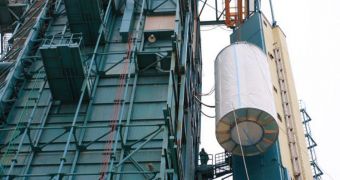As NASA and the Comisión Nacional de Actividades Espaciales (CONAE) – the Argentinian space agency – prepare to launch the SAC-D spacecraft, experts take a retrospective look at the complexity associated with measuring ocean salinity from space.
The Satelite de Aplicaciones Cientificas vehicle is a joint endeavor between CONAE and NASA, and it will carry the American-built Aquarius instrument. This is the most complex salinity-measuring device ever sent to space.
Its goal will be to measure changes in salinity affecting the global ocean, and to determine how oceanic circulation is linked to Earth's climate. A host of other applications for the Aquarius / SAC-D are also available, officials from the two space agencies say.
Aquarius was developed by a collaboration of researchers at the NASA Jet Propulsion Laboratory (JPL), in Pasadena, California, and the NASA Greenbelt, Maryland-based Goddard Space Flight Center (GSFC).
The principal investigator of the science data the instrument will send back is Earth & Space Research senior scientist and oceanographer Gary Lagerloef. The expert was the first to show, precisely 20 years ago, that it's possible to use airborne radiometers to measure salt in seawater from the air.
“That flight was a turning point. We could clearly see the range that we needed to study salinity from its lowest levels in the North Pacific to the highest salinity levels in the North Atlantic,” he says.
The researcher also reveals that being able to measuring water salinity from an orbital vantage point is one of the last great frontiers for ocean remote sensing. The European Space Agency (ESA) already has such a spacecraft, the Soil Moisture and Ocean Salinity (SMOS) satellite.
On June 9, NASA will gain the same capabilities. This is when SAC-D is scheduled to launch, aboard the Delta II 7320-10 delivery system. The rocket will take place from Space Launch Complex 2 (SLC-2) at the Vandenberg Air Force Station (VAFB), in California.
According to JPL experts, one of the things that separate SAC-D from SMOS is the fact that the former has more advanced equipment. In addition to a passive radiometer (such as the one SMOS carries), Aquarius is also equipped with an active scatterometer radar.
This instrument is responsible for correcting the measurements collected with the radiometer instrument. These readings can be influences by the roughness of the sea surface.
“This is a level of accuracy and stability that has never been achieved in space before,” concludes JPL Aquarius instrument scientist Simon Yueh.

 14 DAY TRIAL //
14 DAY TRIAL //